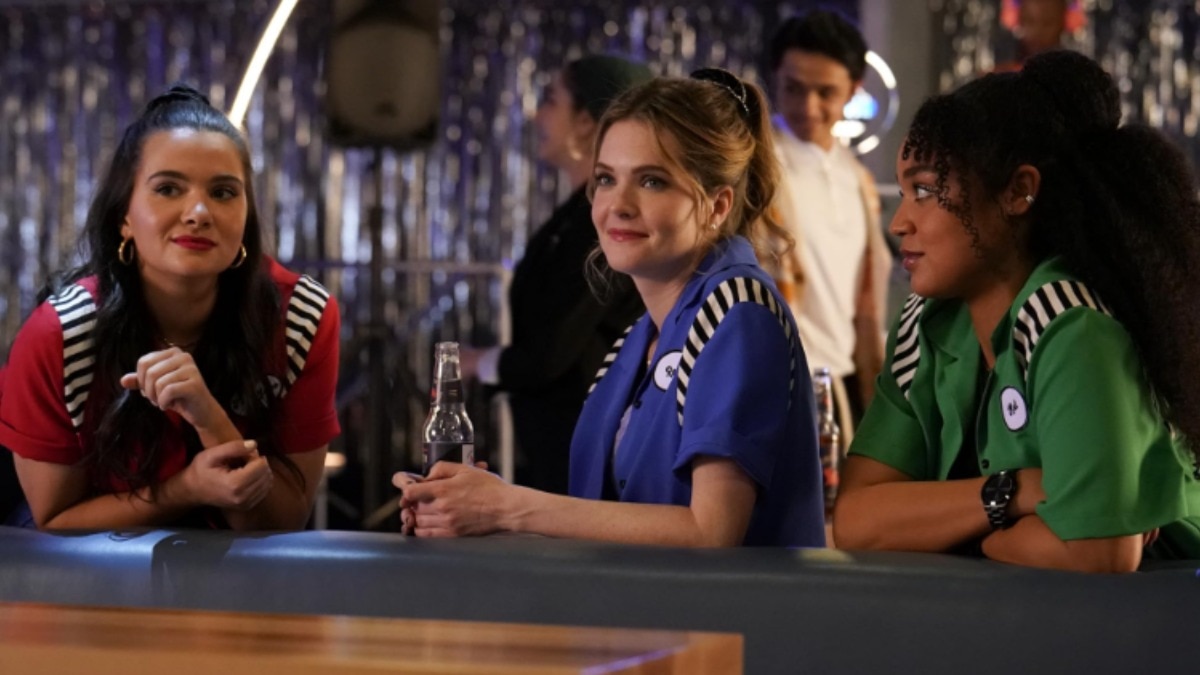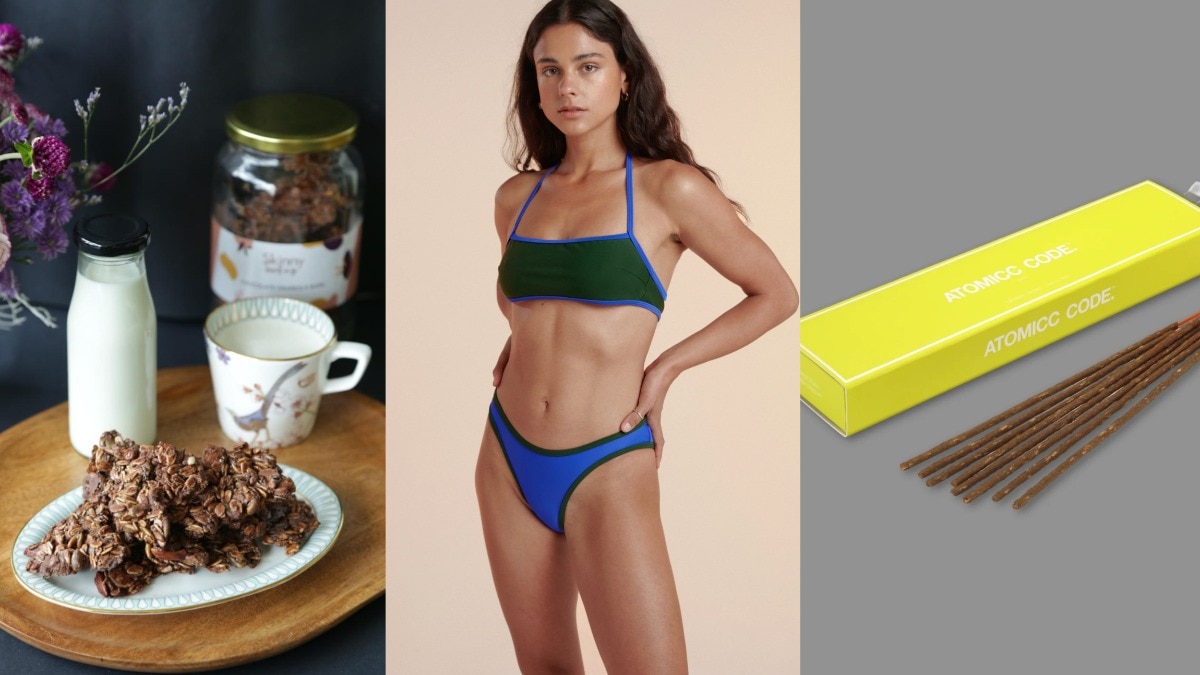
Photographer and multimedia artist Lorna Simpson on focusing on the personal and the politicial
For Harper’s Bazaar, she creates a new work that confronts the history of the pin-up girl, and its influence on the representation of the female body in art.


I am nervous to speak with Lorna Simpson. Her work, ranging from photographic studies, of herself and other subjects overlaid with text, to films, drawings, and sculptures, has shaped so much of the conversation about Black womanhood, sexuality, and the body for the past three decades. Talking to Lorna feels, in my imagination, like talking to an oracle.
Then there she is, on Zoom from Los Angeles, detailing her time during the pandemic, which sounds so much like the experiences of so many people I know. It was about, she says, “attending to family and people around me”. When Covid-19 hit, Lorna was in LA, where she was preparing for a show. Usually in New York, she was unmoored from her main studio base. The 61-year-old artist, an influential creative force since first emerging on the scene in the 1980s, was forced to rethink how she approached making art. “I noticed I just need to be real present in whatever I am making,” she says.
The work Simpson made for Harper’s Bazaar is called Floating Actuality, a group of collages that play with her personal archive of pin-up photographs from old issues of Jet and Ebony magazines, and brim with the possibilities of the cosmos, referencing both the art history of the female body and the vastness of the Universe.
The collages are a continuation of a series Lorna began early in the pandemic that is part of her new show, Everrrything, on view at the Los Angeles outpost of her gallery, Hauser &Wirth. They were born, in part, from necessity. “I have a huge archive of materials to work from,’’ she explains. “It’s very simple. It’s just two elements. It’s based on intuition... What are the things that you’re most attracted to, without trying to over-intellectualise or force them into a particular paradigm of meaning?”

Why is Simpson drawn to working with these images from Jet and Ebony? She is quick to point out that her use of material from these publications is a conversation with artists such as Theaster Gates and Kerry James Marshall, who have each engaged in their own work with the legacy of the magazines and the Black-owned, Chicago-based company that started them, Johnson Publishing. Jet and Ebony were the visual definition of post-war Black striving. They were objects that lived in so many Black spaces—barbershops, grandmothers’ coffee tables—both intimate and public. “(It’s about) being able to look back at it and see what an amazing archive it is,” Lorna says. “Over the course of time, things shift and change, and the parameters of the archive show (themselves). The things that are left out purposely...that is a beautiful process for me to look back with that kind of eye toward what’s missing.” Also, Lorna adds, “I can’t resist a beautiful image.” The pin-ups themselves are part of a longer dialectic around representations of women and sexuality in Western art. The ancestor of the pin-up pose is the odalisque, an artistic trope steeped in the histories of gender, exploitation, and colonialism. It was originally a pose reserved for depicting the sex workers of the Ottoman Empire—an identity specifically considered ‘other’ to Western viewers. An odalisque was a way to represent sexuality and post male heterosexual desire while pointedly reserving these potentially violent and transgressive impulses for the bodies of women who did not necessarily have a place in the Western world. The odalisque, apart from the bounds of European society, was brought to the fore in Edouard Manet’s famous 1863 painting Olympia, which scandalised contemporary viewers in its depiction of a nude, identifiable white woman in the pose, her ambiguous status made even more apparent by the clothed, dark-skinned maid behind her.

In the artist and cultural critic Lorraine O’Grady’s 1992 essay on the work, Olympia’s Maid, she wrote, “The female body in the West is not a unitary sign. Rather, like a coin, it has an obverse and a reverse: on the one side, it is white; on the other, non-white or, prototypically, black. The two bodies cannot be separated, nor can one body be understood in isolation from the other in the West’s metaphoric construction of ‘woman.’ White is what woman is; not-white (and the stereotypes not-white gathers in) is what she had better not be.”
The pin-up evolves from this stark delineation—the image borrowing and adding on to the language of the odalisque. But the pin-up transforms it into a dialect that bodies can speak from different races under the totalising power of capitalism. The Jet 'Beauty of the Week'—a regular feature highlighting a single Black woman—held the promise of a kind of equality of Eros. Lorna’s appropriation of these images, though, challenges the calculus that equates glamour shots with the complicated history of racial capitalism. Looking at them, I’m reminded of all that the pin-up pose signifies—money, race, sex, power, conquest, domination—in a blink of an eye. It’s so ingrained that we understand that the poses these bodies have arranged themselves in means ‘pin-up’, even though the original commercial usage no longer exists. But Lorna’s collages short-circuit those connections. The poses of the body are put into stark relief by the 19th-century celestial maps overlaid on them, drawing attention to the pure contortion of the poses, their artificiality.

The collages, Lorna says, are a “beautiful kind of explosion”. They are “ridding ourselves of all of those containers”—body, race, gender, sexuality. “And, of course, all the pushback. All the cues about the body in terms of its sexuality are completely eliminated. So then it becomes a starscape, which makes it a level playing field. If the stars fill that space, then what body is actually there that isn’t filled with that kind of expansiveness?”
The starscapes also draw attention to our assumptions that the poses belong to women’s bodies; draped in comets and constellations, the bodies before us could belong to anyone of any gender.There are only the eyes, looking straight at the viewer, that provides an understanding of a singular self. It’s a reference, again, to Manet’s Olympia, with her direct, challenging gaze, acknowledging the viewer and the performance of it all. Performance has always been a part of Lorna’s work. It’s there in her earliest pieces, such as 1989’s Guarded Conditions, a series of Polaroids of a model, fragmented and arranged over text; or in 2009’s May, June, July, August ’57/’09 #8, her own image in duet with found portraits she’d sourced on eBay. “I hate being in my work. I like the privilege of being behind the scenes,” Lorna offers. But for pieces in which she does appear, “I thought, ‘How beautiful to extend the language of performing for the camera by mimicking (those poses).’” Of her odalisques for the 21st century, Lorna muses, “In the vastness of what our bodies are made of and the way that we think about them...the construction of identity is endless. And shouldn’t have any societal boundaries in anyway.”
This piece originally appeared in the January-February 2023 print edition of Harper's Bazaar India.










